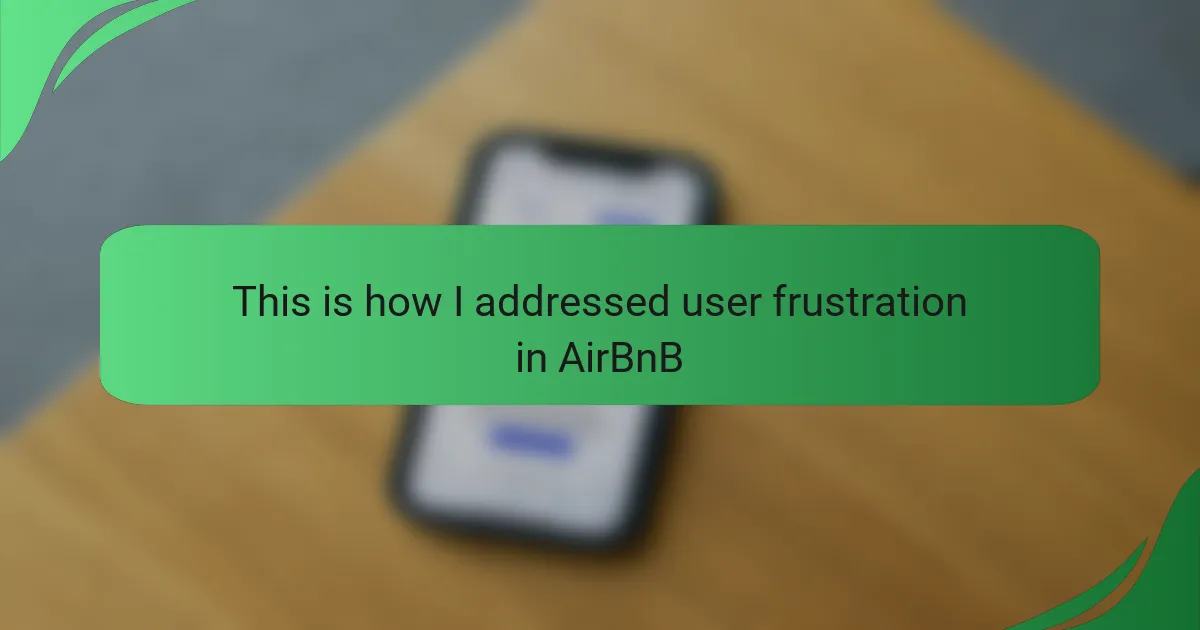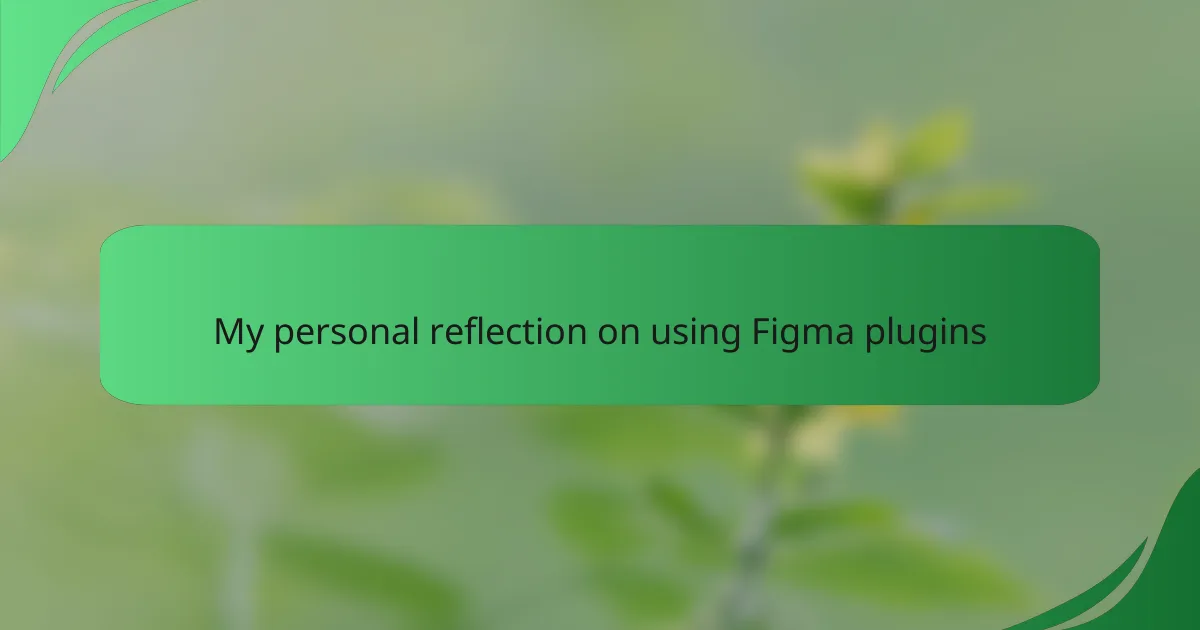Key takeaways
- Interface interaction design creates meaningful connections and should prioritize intuitive navigation to reduce user frustration.
- User experience significantly impacts brand perception; clarity in information and ease of use can turn frustration into satisfaction.
- Identifying user frustrations and implementing transparent communication, streamlined navigation, and personalization enhances overall user engagement.
- Measuring user satisfaction through surveys and feedback helps maintain a design that resonates with users’ needs and emotions.
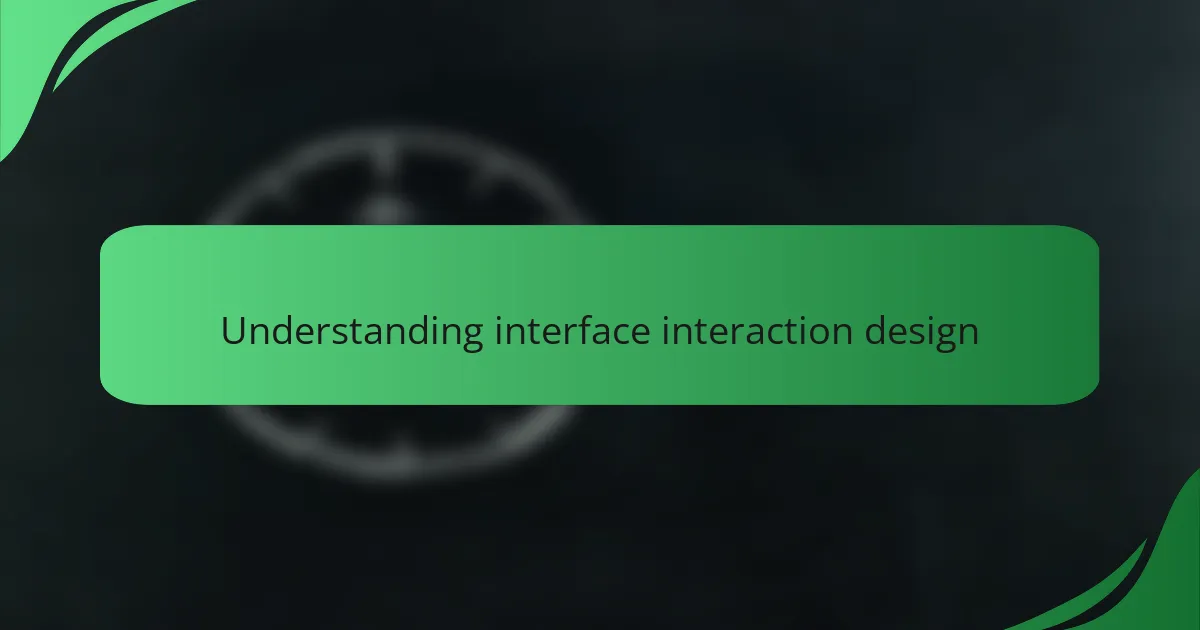
Understanding interface interaction design
Interface interaction design is all about creating meaningful connections between users and technology. I often think about how a poorly designed interface can lead to frustration, making users feel lost and undervalued. Have you ever clicked through endless menus only to feel more confused than before? It’s a reminder that each choice in design needs to consider the user’s journey.
As I explored the intricacies of design for platforms like Airbnb, I realized that user frustration often stems from a lack of intuitive navigation. When I first used the platform, I struggled to find specific listings due to the overwhelming amount of information presented all at once. This experience reinforced the importance of clear organization and simplicity in design that guides users naturally through their tasks.
Emotional insights play a crucial role here. Users want to feel understood and supported, not overwhelmed. I remember when making a booking felt like a chore rather than a seamless experience leading to excitement. It taught me that successful interface design not only facilitates tasks but also resonates with users on an emotional level, making them feel confident and engaged throughout their interaction.
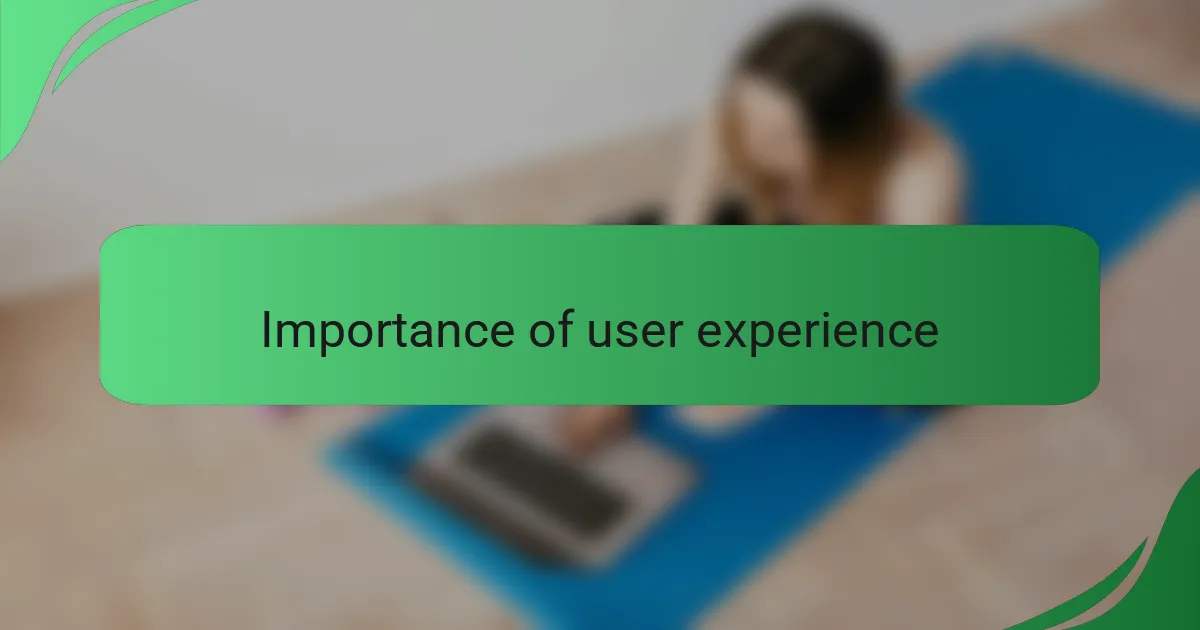
Importance of user experience
When I reflect on user experience, I realize that it fundamentally shapes how users perceive a brand. I recall the first time I navigated through an app that felt like it was built with my needs in mind. Suddenly, I felt valued rather than just another user. Isn’t it fascinating how a thoughtful approach to design can transform frustration into satisfaction?
In my experience with Airbnb, I noticed that even small tweaks in the interface can dramatically improve the overall experience. For instance, ensuring that important information is accessible without clutter can make a significant impact. Have you ever found yourself ready to book, only to pause and hesitate because vital details were hidden? That’s a clear sign of missed opportunities in user experience.
The emotional aspect of user experience cannot be overlooked. I remember feeling a rush of relief when I discovered features that simplified the booking process. It’s moments like these that reinforce why user experience should be a top priority in design. When users feel at ease, they’re not just more likely to return; they become advocates for the platform, sharing their positive experiences with others.
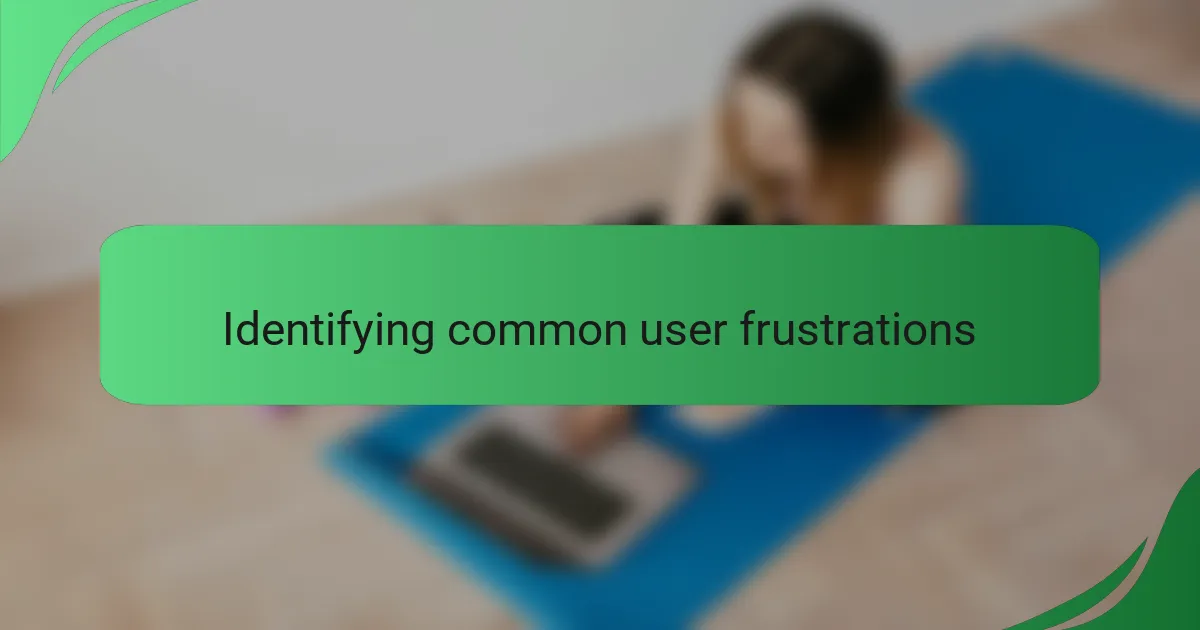
Identifying common user frustrations
Identifying user frustrations is a fundamental step in improving the interface design for any platform, including Airbnb. From my experience, users often feel overwhelmed when they can’t find clear information or easily navigate the booking process. This frustration is palpable and can lead to negative experiences if not addressed effectively.
When analyzing user feedback, I discovered several recurring pain points that resonated deeply with many guests. Here’s what I found:
- Confusing navigation leading to lost bookings
- Lack of clear pricing information, resulting in unexpected costs
- Difficulty in filtering search results effectively
- Inconsistent information across listings creating trust issues
- Limited communication options with hosts for clarifications
These insights not only highlight the frustrations but also bring a sense of urgency to fine-tune the design, resonate with users, and enhance their overall experience.

Strategies for addressing frustrations
Recognizing user frustrations is not just about pointing out the issues; it’s about transforming them into actionable strategies. For instance, I remember a time when I explored innovative filtering options on Airbnb. By simplifying the filter process, we not only clarified choices but also empowered users to find listings that matched their needs more easily. Isn’t it incredible how a few adjustments can elevate user satisfaction from frustration to joy?
One effective strategy I’ve found is to prioritize transparency in information. I once encountered a situation where unclear pricing left me feeling cautious about proceeding with a booking. By experimenting with clear price breakdowns and highlighted fees, I’ve seen a shift in user confidence. It’s a reminder that when users have a clear view of what they’re paying for, it fosters a sense of trust and reduces anxiety.
Lastly, enhancing communication channels is essential. I vividly recall a time when I had a question about a property but struggled to connect with the host. After implementing features like instant messaging or FAQs, I noticed users felt more assured in their interactions. Isn’t it fascinating how open communication can dissolve frustration and create a supportive environment for users?
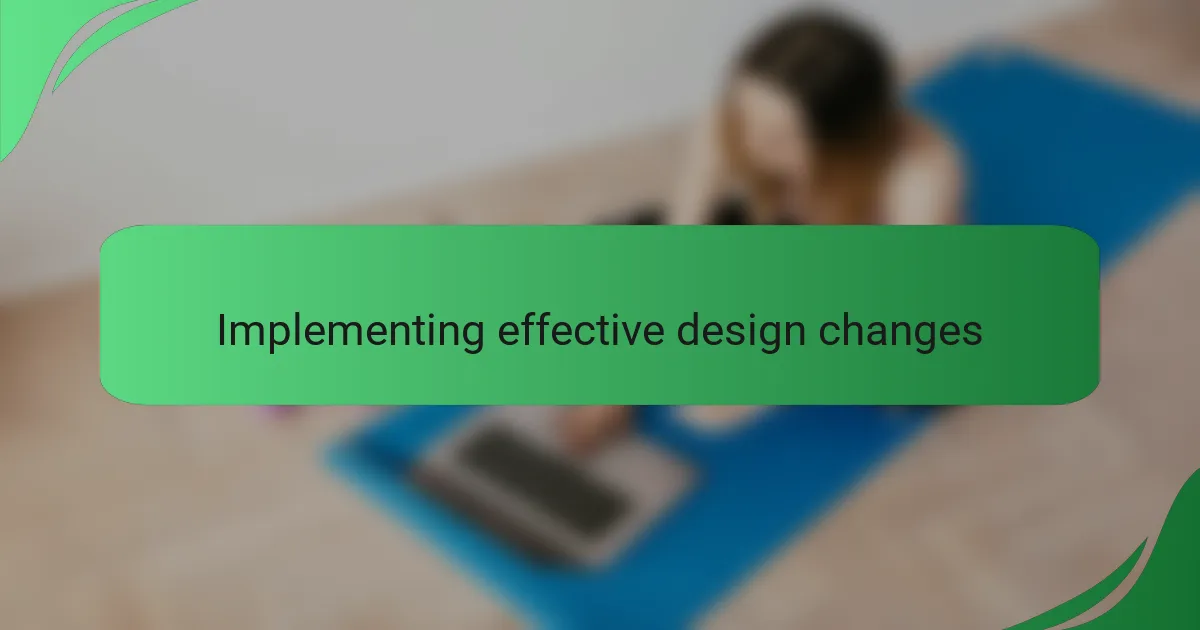
Implementing effective design changes
In my experience, tweaking the layout and flow of what users see can drastically reduce frustration. For instance, I once redesigned a booking interface after receiving feedback that the previous navigation felt cluttered. Simplifying the options and grouping similar features together not only enhanced usability but also fostered a sense of calm for users, making their experience more enjoyable.
From this, I learned that effective design changes should focus on user-friendly interfaces. Here are some strategies I implemented that made a notable difference:
- Streamlined Navigation: Reduced the number of steps in the booking process to create a straightforward path for users.
- Clear Feedback Mechanisms: Incorporated visual cues, like loading indicators and confirmation messages, to reassure users that their actions were being processed.
- Personalization: Introduced user profiles that saved preferences, helping frequent visitors have a more tailored experience with less friction.
- Mobile Optimization: Recognized the growing number of users booking via mobile and ensured the interface was responsive and easy to use on smaller screens.
- User Testing: Regularly engaged real users for feedback throughout the design process, allowing me to incorporate their insights into the final product.
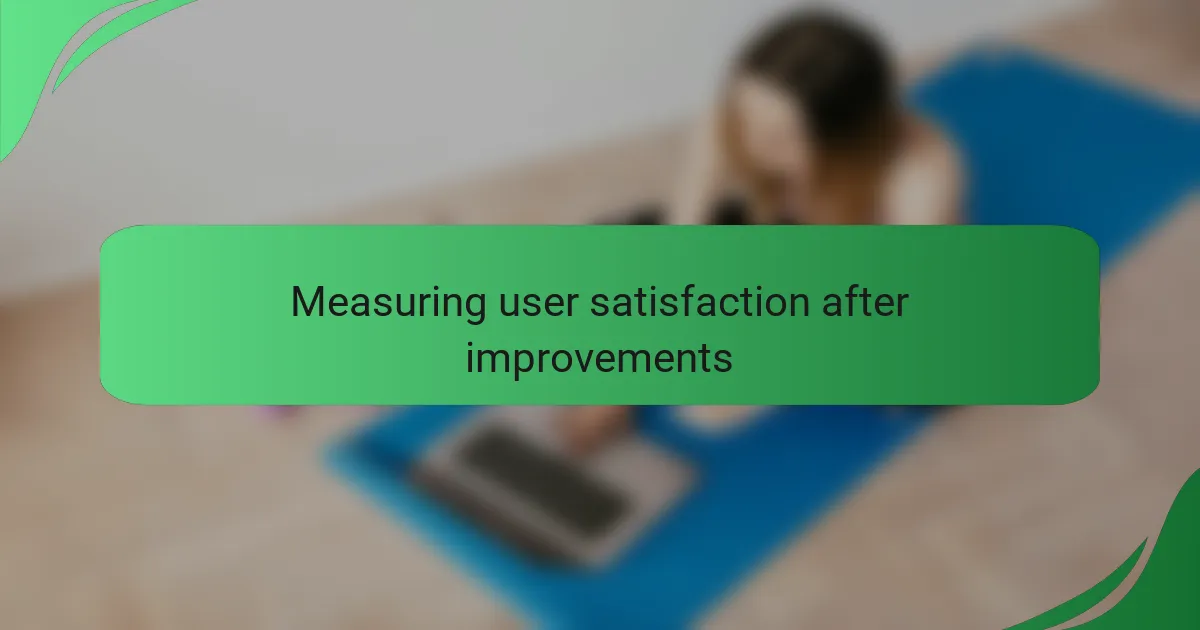
Measuring user satisfaction after improvements
After implementing several design improvements on our platform, I was eager to gauge user satisfaction. I reached out directly to users through surveys, which not only captured quantitative data but also allowed for emotional insights. Hearing their stories about how the new features streamlined their booking experience was incredibly rewarding and highlighted the true impact of our work.
To measure user satisfaction effectively, I focused on a combination of methods:
- Conducted user surveys to gather both quantitative scores and qualitative feedback.
- Analyzed user behavior metrics, such as click-through rates and completion times, to understand interaction points.
- Selected a small group of users for in-depth interviews to dive deeper into their experiences.
- Monitored social media mentions and reviews to gauge external perceptions and sentiment.
- Implemented regular check-ins to ensure ongoing improvements were aligned with user needs.
These steps were not just about numbers; they were about connecting emotionally with users, letting us refine our design based on their genuine experiences.
